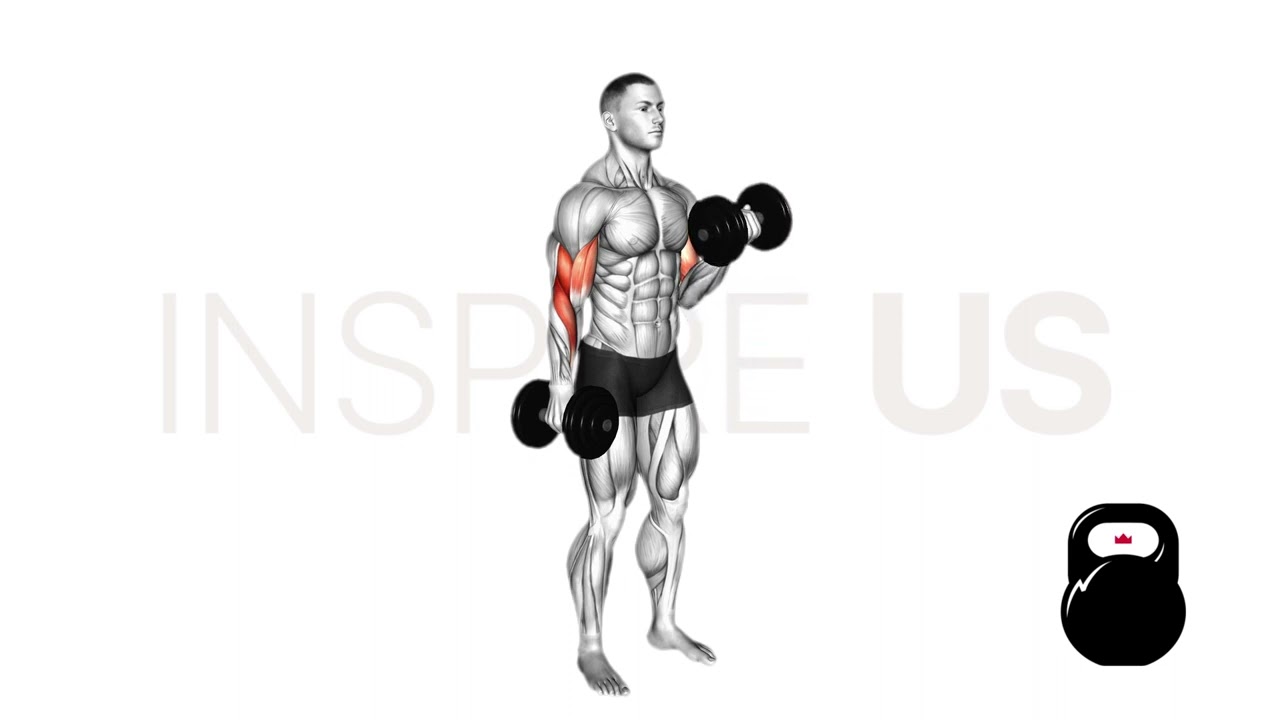Dumbbell Bicep Curls: Benefits, Muscles Worked, and More
The dumbbell curl is a single joint isolation exercise primarily involving elbow flexion as the main mechanic.
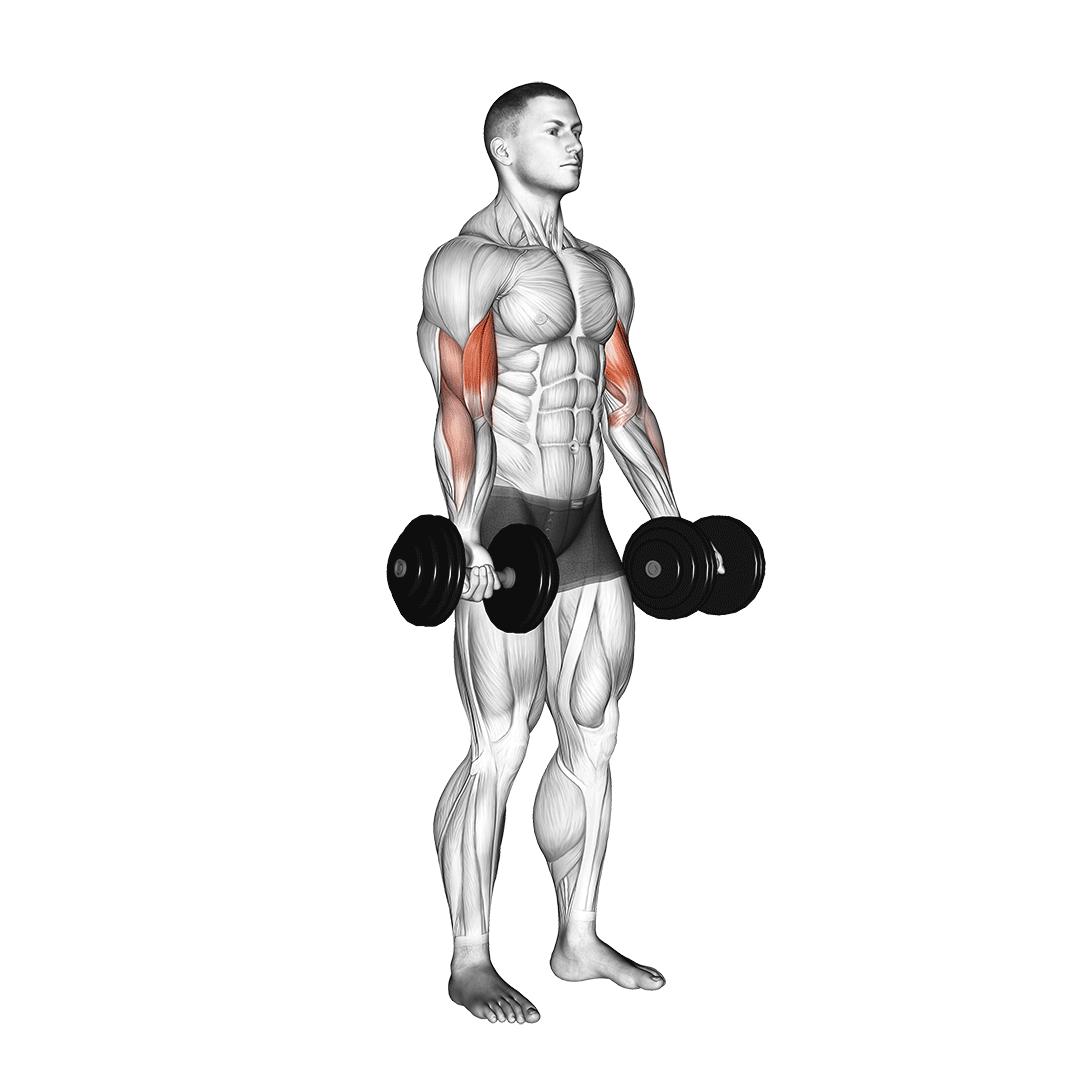
It is solely utilized as an accessory movement due to its nature as an isolation exercise, and is rarely ever performed as the only source of biceps activation within a workout.
In practice, the dumbbell curl is simply the “baseline” curl variation that all weightlifters are familiar with - featuring a full elbow flexion range of motion, high capacity for volume and slow contraction of the biceps brachii.
Lifters wishing to progress further may do so with programmed progressive overload or by performing a more difficult curl variation.
Who Should Do Dumbbell Curls?
Dumbbell curls are as simple a free weight exercise as one can have - meaning that it is appropriate for even the most uninitiated of weightlifters.
However, bodybuilders and individuals seeking greater biceps mass will benefit the most from bicep curls due to its high volume capacity and lengthy time under tension.
How are Dumbbell Curls Programmed?
Dumbbell curls are most often performed for high volume sets with only a low amount of weight. Performing the exercise with excessive resistance may result in bicep tears or “cheating” of the repetition.
For training programs already featuring significant biceps workloads, 2 sets of 12 repetitions may be sufficient.
However, for programs with no other biceps isolation exercises, 3 sets of 8 repetitions at a moderate amount of weight is best.
How to Do Dumbbell Curls
To perform a repetition of dumbbell curls, the lifter will stand upright with a pair of dumbbells held at their sides, palms facing outwards.
The torso must remain stationary and straight throughout the set, with the elbows pressed against it and held in place as much as possible.
Beginning the repetition, the lifter will bend at the elbows and draw the dumbbells upwards - stopping once the dumbbell is at the same elevation as the shoulders.
Squeezing the biceps, the lifter will then slowly lower the dumbbells back to their original position, ensuring that the descent is done in a slow and controlled manner.
At this point, the repetition is complete.
What Muscles are Worked by Dumbbell Curls?
Dumbbell curls are an isolation exercise, and as such will only train a single muscle group; the biceps brachii.
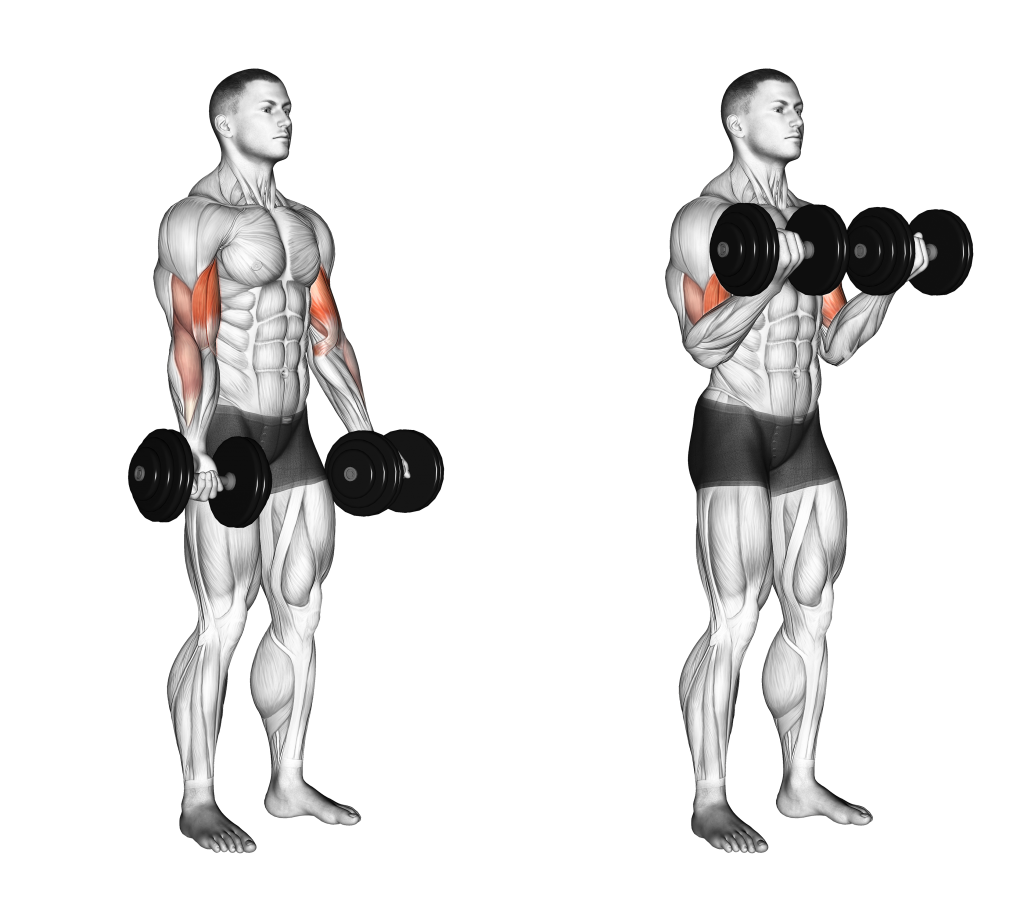
Nearby muscles like the brachialis and forearm flexors may act in a stabilizing capacity, but such contraction is ultimately inconsequential and unlikely to result in any significant development.
What are the Benefits of Doing Dumbbell Curls?
Apart from the usual benefits seen in all resistance exercises, the dumbbell curl will also impart several key advantages that make it invaluable as an accessory movement in back-and-bicep workouts.
Excellent for Biceps Hypertrophy
Few exercises are as effective at building up the biceps as dumbbell curls - as they not only target the biceps alone, but also do so in a manner that works both heads of the muscle with a significant time under tension.
For the best bicep growth from dumbbell curls, each repetition should be performed with a full range of motion, and each set should feature a moderate amount of volume so as to ensure hypertrophy occurs.
Novice-Friendly Execution, Low Risk of Injury, and Low Joint Impact
Dumbbell curls are favored by many due to their relatively simple form and the nearly negligible risk of injury occurring as a result of their performance.
While this doesn’t mean poor form should be followed, it nonetheless allows individuals with little to no experience in weightlifting to train their biceps without the need for advanced exercise familiarity or conditioning.
In addition, when performed correctly, bicep curls are known to aid in reinforcement of the various non-muscular tissues of the elbow joint - further reducing future risk of injury.
Elbow Flexion Reinforcement
Skeletal musculature is not the sole type of tissue that benefits from regular resistance training. Connective tissues and even bones will - over a lengthy period of time - grow denser and more pliable, allowing them to become more resistant to acute injury in the future.

Bicep curls help reinforce the elbow joint through two mechanisms.
- First is the obvious strengthening of the biceps - of which control and stabilize elbow biomechanics.
- The second being through reinforcement of the connective tissues that make up the elbow joints.
In both cases, dumbbell curls directly create a more durable and flexible elbow joint, as well as greater biomechanical function of said joint.
Carryover to Curl Variations and Other Pull Exercises
Because of the dumbbell curl’s single-joint nature and isolated recruitment of the biceps, it is an excellent movement for producing carryover training stimulus to exercises like chin-ups and barbell rows - both of which utilize the biceps and elbow flexion in their performance.
When programmed in an assistive manner, dumbbell curls can help correct sticking points in compound pulling exercises, reduce the risk of bicep and elbow instability, as well as help maximize biceps brachii training volume within the same workout session.
To take advantage of this particular dumbbell curl benefit, it is best to program the exercise after the heavy compound exercises are already finished.
Most Common Dumbbell Curl Mistakes
Despite the simplicity of dumbbell curl technique, there are nonetheless a few potential mistakes that one should look out for when performing this particular biceps exercise.
Cheating the Repetition
The most egregious mistake made when performing dumbbell curls is swinging or “cheating” the repetition by producing momentum in a manner that does not directly involve the biceps brachii muscles.
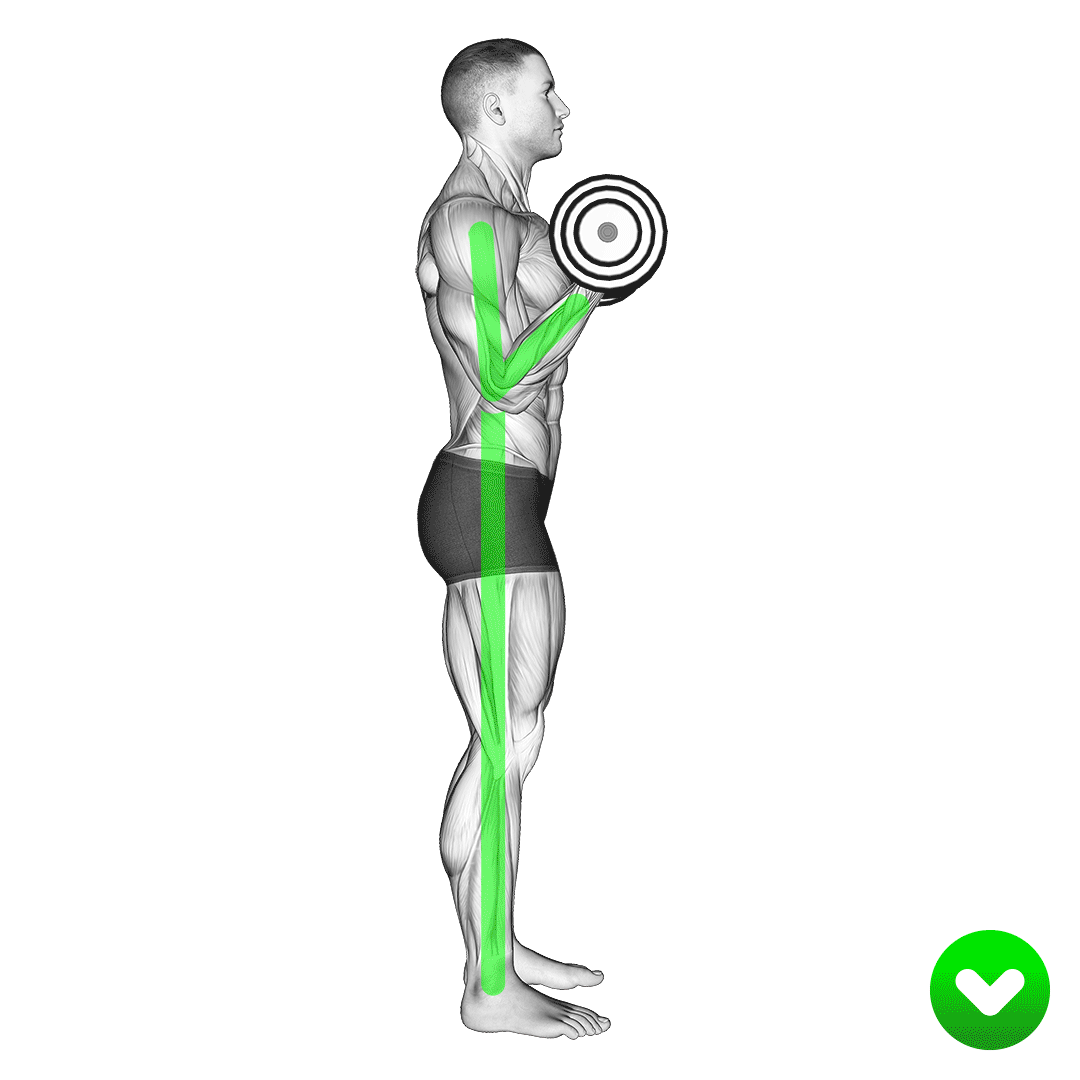
This is primarily a result of lifters attempting to perform dumbbell curls with an amount of weight that is too heavy for their current capabilities - but may also occur due to bad lifting habits.
In either case, the dumbbells should only move in a slow and controlled manner during dumbbell bicep curls, as failing to do so can easily negate the benefits of the exercise, if not result in injury to the wrists and biceps.
Insufficient Range of Motion
Though unlikely to result in injury, failing to complete a full range of motion of the dumbbell curl can reduce its effectiveness as a muscle-building exercise.
A shorter range of motion means that the biceps are not trained from every angle possible, and that they are subject to a summarily shorter length of time under tension as well.
Both factors reduce the intensity of muscular hypertrophy that may otherwise occur, and can potentially result in issues like muscular imbalances and weak points in the biceps’ range of motion.
To ensure that the dumbbell curl is performed with a full range of motion, the dumbbells should be curled all the way to shoulder-height, and lowered back to the sides of the pelvis or legs with each repetition.
Detaching or “Floating” Elbows
During dumbbell curl performance, the elbows should remain relatively stationary throughout each repetition, with the lifter keeping them close to the sides of the torso so as to avoid “dragging” or otherwise shifting the focus of the exercise away from the biceps brachii.
Allowing the elbows to detach from the sides of the torso can cause excessive strain to be placed on the inner section of the elbow joint, as well as lead to other issues in form adherence.
Over-Pronating or Hyperextending the Wrists
The most common complaint of dumbbell curls is pain radiating around the radial section of the forearms and wrists.
This is primarily a result of the lifter’s wrist position as they are performing the exercise, and can be avoided by ensuring that the wrist remains in a neutral state that is parallel with the bones of the forearm throughout each repetition.
Allowing the wrists to bend backwards or to the sides can easily place excessive stress on the various small connective tissues that make up the lower arms, resulting in discomfort and injuries of both a chronic and acute nature.
Dumbbell Curl Alternatives and Variations
For lifters that find the dumbbell curl to be insufficient for their training needs, several variations and alternatives are more than capable of acting as substitute exercises - many of which allow lifters to accentuate certain characteristics of the dumbbell curl to use in their training program.
1. Hammer Curls
As an alternative to the dumbbell curl, hammer curls place a greater emphasis on the muscles of the brachioradialis and the brachialis - the two other elbow flexors aside from the biceps brachii.
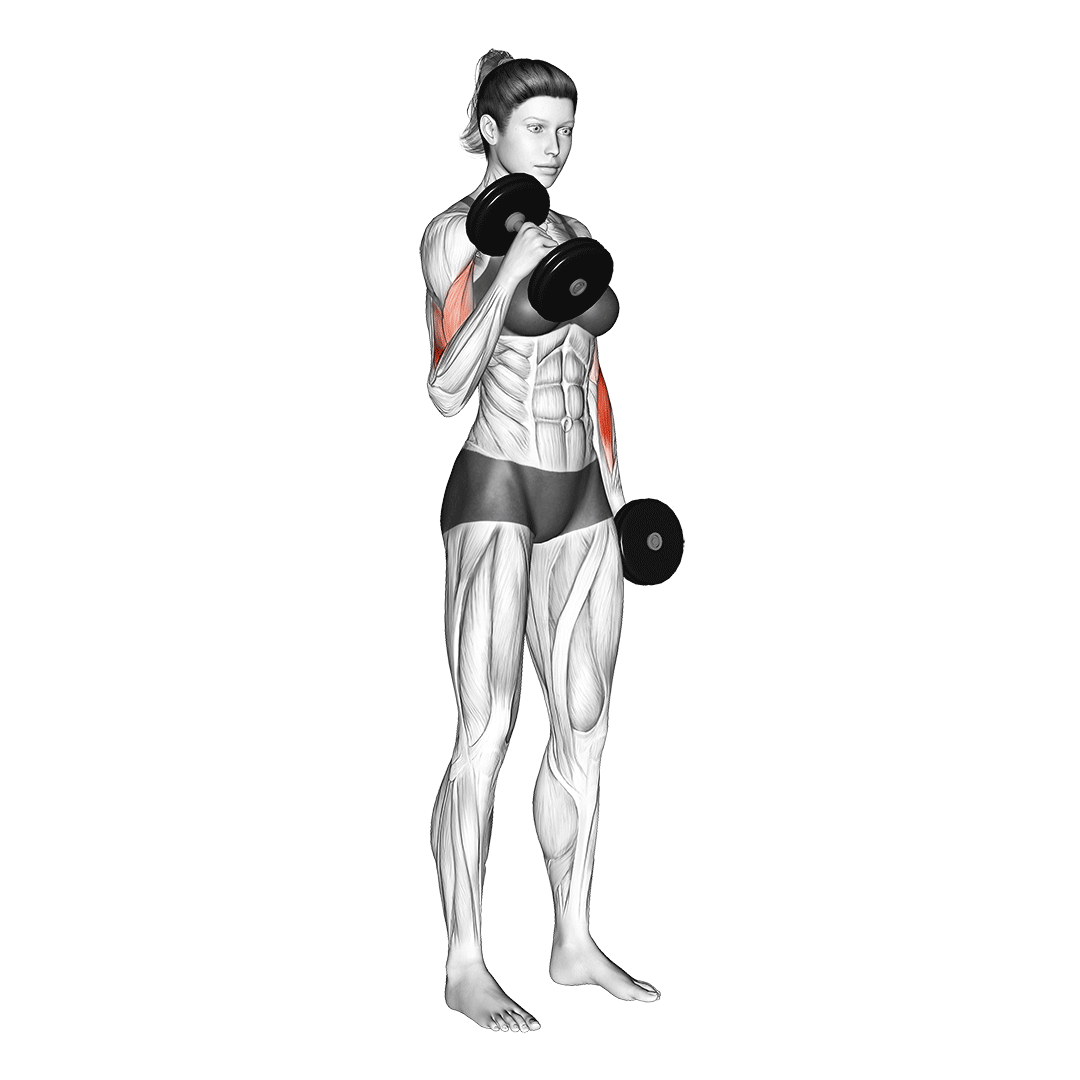
Both muscles contribute to the general appearance of thickness and muscular definition of the arms, and respond to much the same training stimulus as the biceps themselves.
Unlike conventional dumbbell curls, hammer curls are performed with a neutral grip and a distinctly reduced level of activation of the biceps brachii.
2. Preacher Curls
In cases where the regular dumbbell curl does not produce enough biceps recruitment to meet the lifter’s needs, the preacher curl is used as a variation instead.
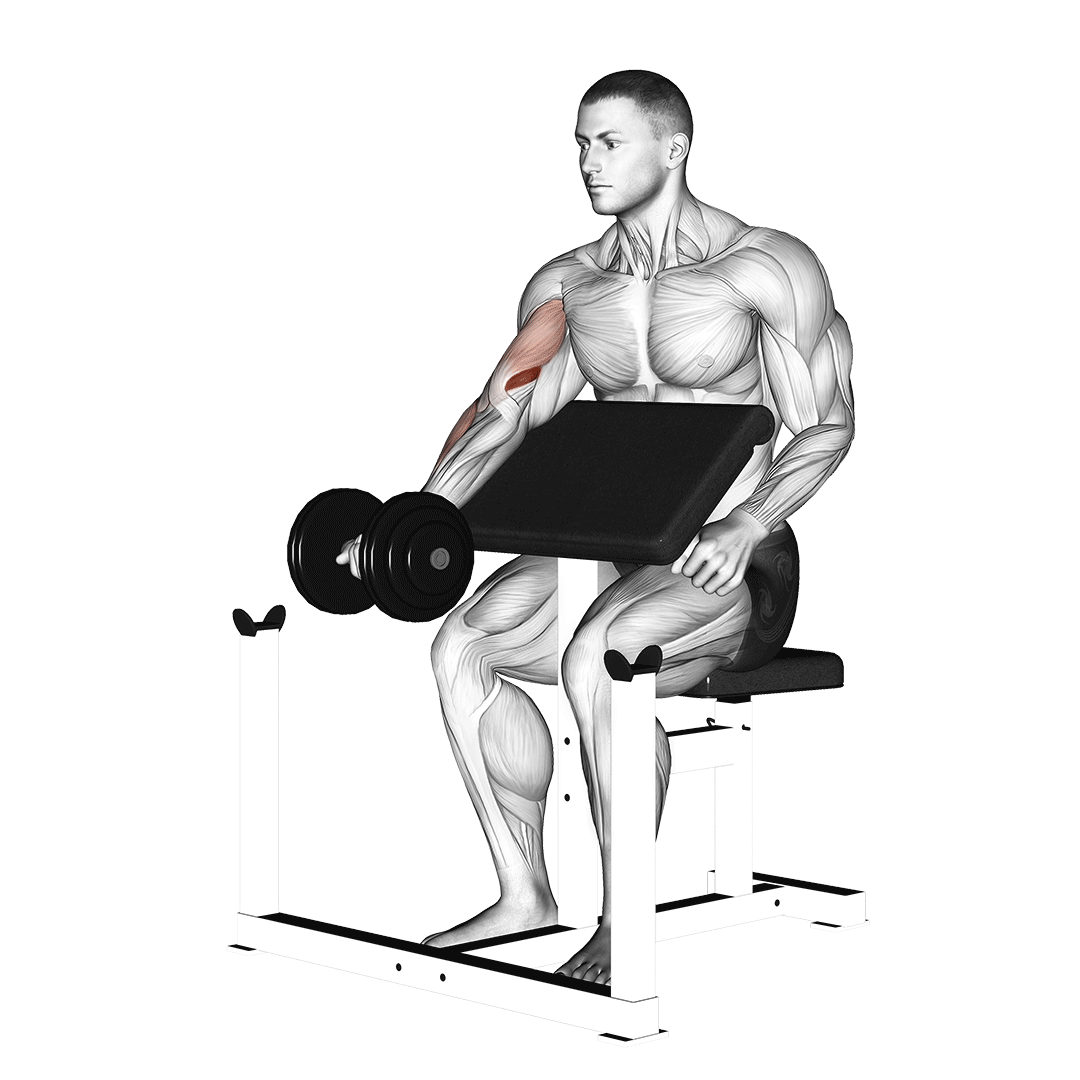
Preacher curls are simply conventional dumbbell curls performed with the use of a preacher bench. This even further increases the range of motion of the exercise, and locks the elbows in position so as to ensure that the biceps are worked to the fullest extent possible.
3. Zottman Curls
Just as how hammer curls exchange emphasis on the biceps for other muscle groups, the Zottman curl trades the descending half of a regular dumbbell curl for greatly increased forearm growth instead.
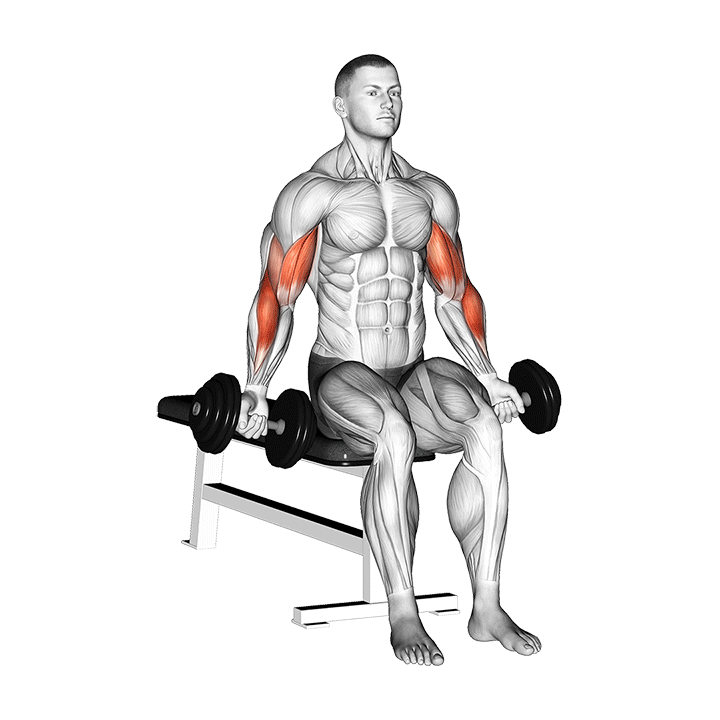
Zottman curls begin as a regular dumbbell curl, but transition into a reverse grip curl during the latter half of the exercise - thereby dynamically recruiting muscles like the brachioradialis and forearm flexor muscles.
Frequently Asked Questions (FAQ)
Why do Dumbbell Curls Work the Biceps?
Dumbbell curls solely work the biceps because of the supinated grip involved.
When combined with elbow flexion, the biceps brachii are the only muscle group in a position capable of outputting any amount of force - hence the fact that dumbbell curls do not recruit any other muscle group in a dynamic capacity.
Do Dumbbell Curls Build the Forearms?
No - dumbbell curls do not utilize the muscles of the forearms in any manner that isn’t isometric. This means there is little chance for muscular growth to occur in the forearms as a result of dumbbell curl performance.
If you wish to build up the size and strength of your forearm muscles, exercises like the reverse grip curl and the farmer’s walk are excellent choices.
Is it OK to do Dumbbell Curls Everyday?
Performing any exercise on a daily basis is likely to result in poor results and injury - especially weighted exercises like the dumbbell curl.
Instead, it is better to perform dumbbell curls three times a week, with one day of recovery in between training sessions of the same exercise.
Not only does this ensure that the biceps are given sufficient time in which to heal, but it will also ensure that the body can continue progressing by avoiding overtraining.
References:
1. Biscarini A., Borio R., Coscia F., Mazzolai G., Simonetti S., Rosi G. (2005) Biomechanics of dumbbell/barbell and cable biceps curl exercises. Italian Journal of Sports Science 12, 83-93
2. Marcolin G, Panizzolo FA, Petrone N, Moro T, Grigoletto D, Piccolo D, Paoli A. Differences in electromyographic activity of biceps brachii and brachioradialis while performing three variants of curl. PeerJ. 2018 Jul 13;6:e5165. doi: 10.7717/peerj.5165. PMID: 30013836; PMCID: PMC6047503.

